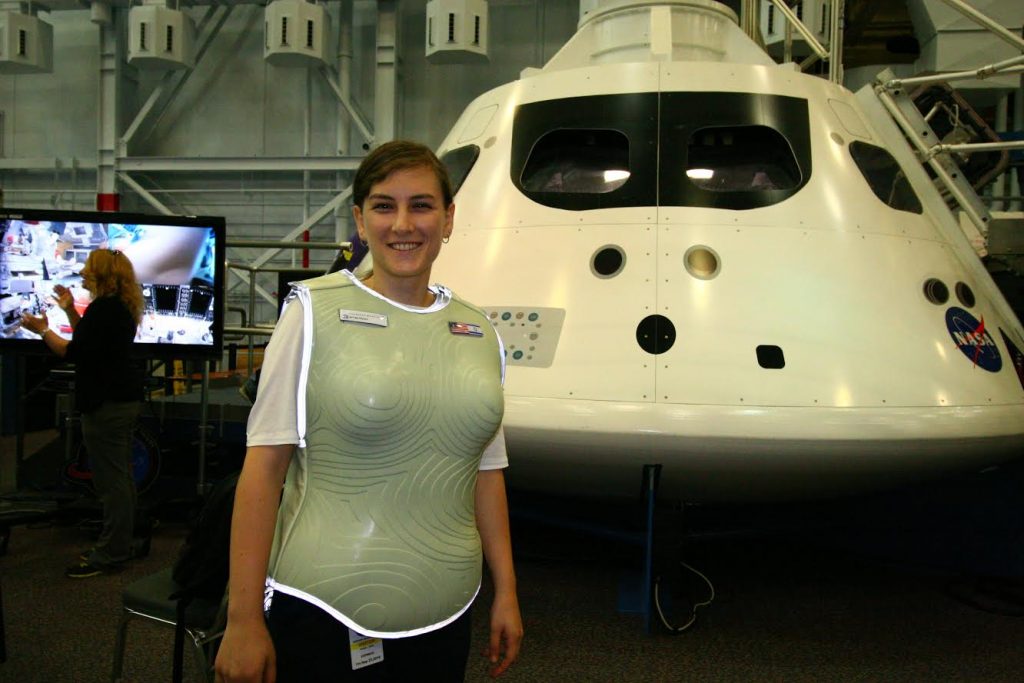While it’s far too early to speculate on who will be the first humans to travel to Mars, we may have an idea of what they will wear: An Israeli-designed space suit.
Together with the Israel Space Agency and the German Aerospace Center, Israeli startup StemRad is suiting up to launch a trial of its new protective suit against cosmic gamma rays on the next flight of NASA’s Orion satellite.
If an initial experiment flight to the moon next year shows that the suit adequately protects the flight test dummy wearing it, StemRad’s suit may be used on the first manned flight to the red planet.
SEE ALSO: Mission To Mars: Israeli Scientist Prepares To ‘Live’ On Mars
Testing on moon mission to prepare for Mars
The German Aerospace Center is responsible for research into the effects of deep space radiation on the human body. As part of this research, Orion will be sent to the moon in 2018 with dummies on its deck, some of which will be dressed in StemRad’s protective suit, while other remain exposed. With the return of Orion to the Earth a month later, the dummies, which will be equipped with thousands of radiation detectors, will be checked under laboratory conditions, and the level of radiation penetrating through StemRad’s suit and absorbed by them, if any, will be closely analyzed.
The team will then make adjustments to the suit in preparation for the first manned mission to Mars, which NASA believes could be scheduled as early as 2121-23, although President Obama once said it could be achieved by the mid-2030’s. StemRad is cooperating in the suit’s development with weapons manufacturer Lockheed Martin, which is also involved in NASA’s program for launching a manned flight to Mars.
The inspiration: From Fukushima to Mars
The story of how this Israeli radiation protection suit was born began during a restless night experienced by Dr. Oren Milstein soon after the earthquake and subsequent nuclear disaster at the nuclear reactors at Fukushima, Japan in 2011.
Following the disaster, they began developing a suit designed for the rescue forces in disaster areas who are exposed to dangerous high-intensity radiation. A few months after the disaster, Dr. Milstein founded the start-up StemRad to developed a special belt to protect the pelvic area, which contains half of the human bone marrow. Because the vest protects the wearer from gamma radiation, the belt is now widely used among first responders around the world. It comes in all sizes, is 100 percent fire-resistant, and has specialized features such as reflector strips and ballistic resistance.
Sign up for our free weekly newsletter
SubscribeStemRad’s suit protects mainly bone marrow, the lungs, chest, stomach, intestine, and the ovaries among women. These organs are particularly sensitive to the formation of malignant tumors as a result of exposure to radiation. The suit itself is made out of hydrogen-rich materials and worn like a vest.
“High intensity ionizing radiation destroys the bone marrow, which is the body’s factory for blood production, causing severe anemia, infections and cancer”, Dr. Milstein said in a statement. “Research has shown that it is sufficient to protect about 5% of bone marrow cells to lead to renewal and recovery.”
The main hazard to which astronauts flying to Mars will be exposed is radiation from solar flares. These flares are liable to continue for many days, and Orion has limited space for its crew to protect themselves from dangerous radiation when solar flares are occurring. The function of the suit is to enable the satellite’s crew to function normally if a prolonged solar flare emitting large amounts of radiation takes place.
SEE ALSO: If Nuclear Disaster Strikes, This Israeli-Designed Belt Protects Against Radiation Exposure
Space Week: Making space accessible to all
The StemRad agreement was signed by Israel Space Agency Director Avi Blasberger and German Aerospace Center Chairwoman Profesor Pascale Ehrenfreund during the 12th International Ilan Ramon Space Conference, which was held as part of Israel Space Week. The annual event include meetings with collaborating space agencies.
“Space Week is an opportunity to make space accessible to the Israeli public as far as possible and close to home,” Israeli Science, Technology and Space Minister Ofir Akunis said in a statement. “Israel Space Week takes this complicated field and translates it into an enjoyable experience.”
Photos and video: StemRad
Related posts

Editors’ & Readers’ Choice: 10 Favorite NoCamels Articles

Forward Facing: What Does The Future Hold For Israeli High-Tech?

Impact Innovation: Israeli Startups That Could Shape Our Future





Facebook comments